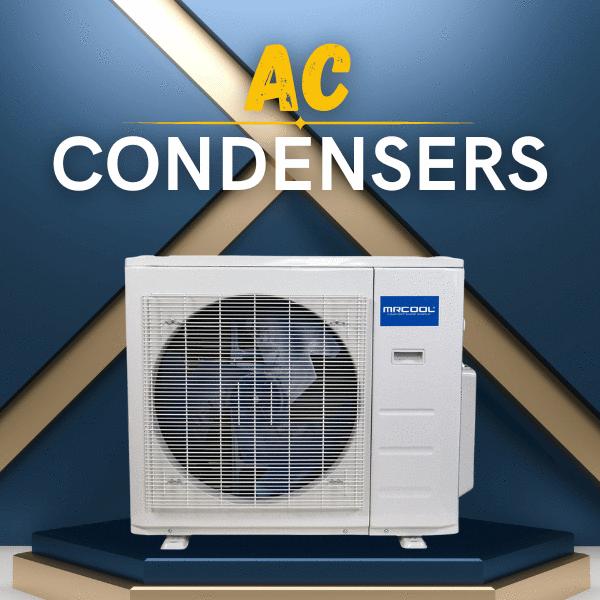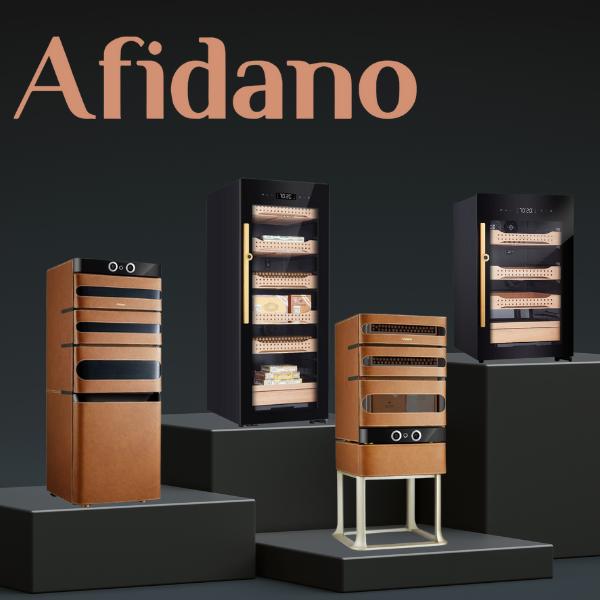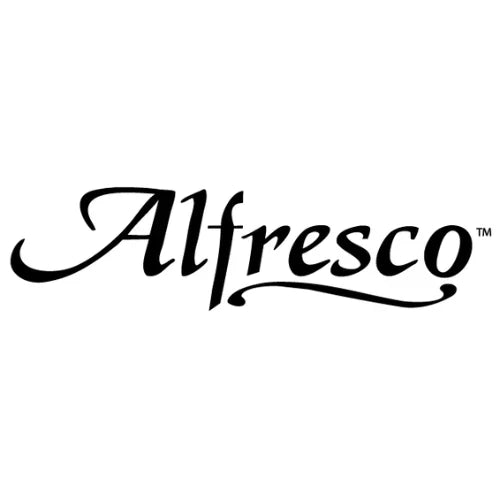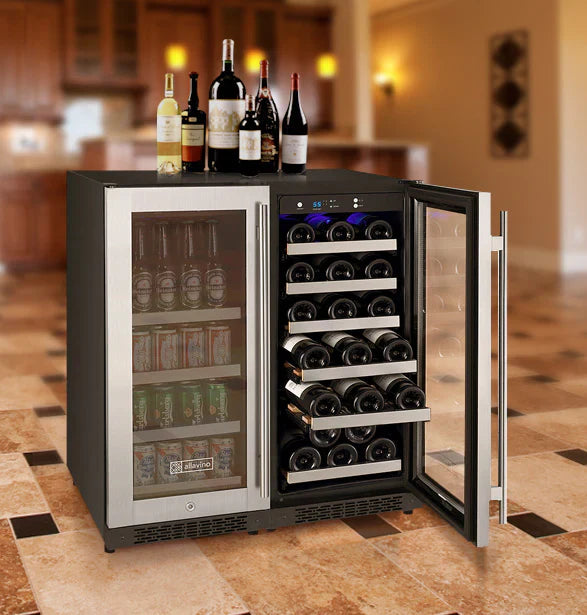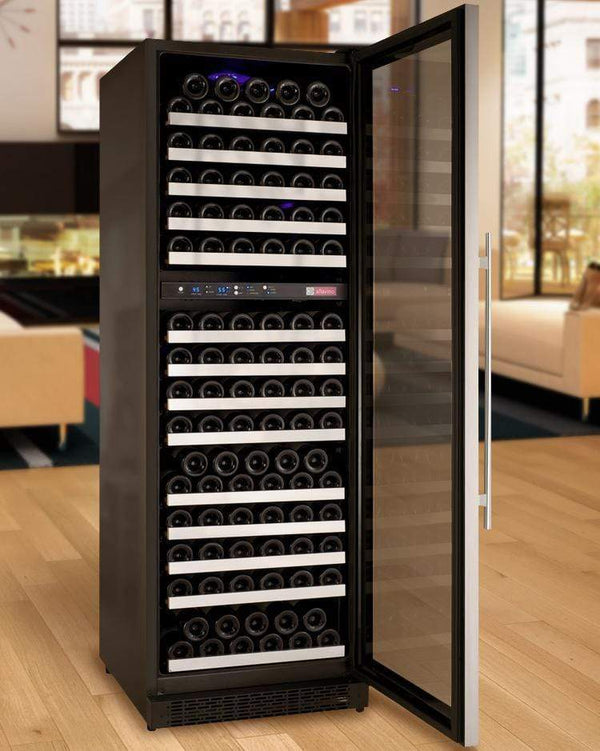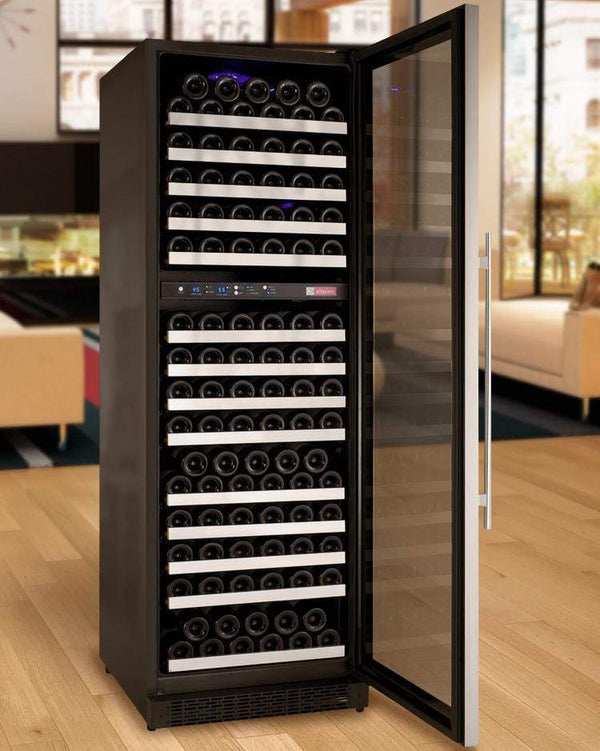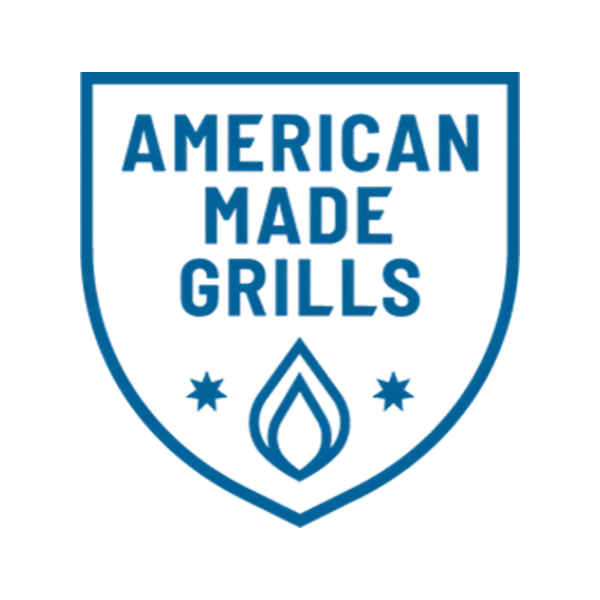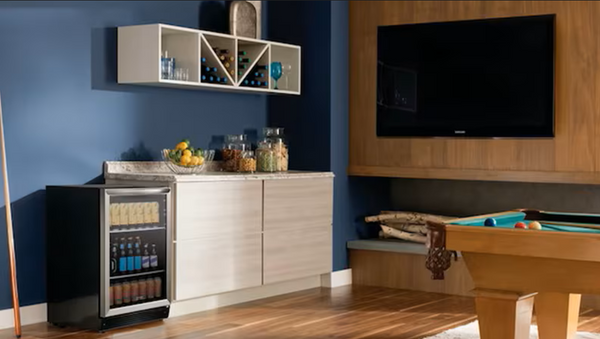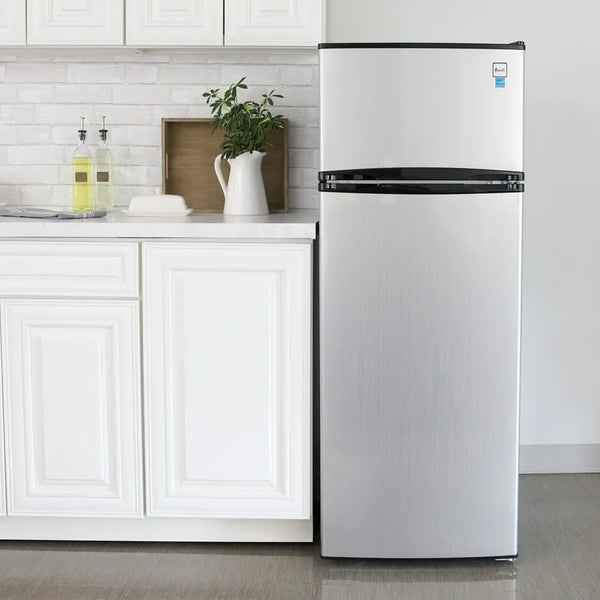How to Size a Wine Cellar Cooling Unit: Complete Guide & Tips
Are You Choosing the Right Cooling Unit Size? Here’s What You Need to Know
By Jim Hopper, Wine Cooling Expert
Choosing the right size cooling unit is one of the most important decisions you’ll make when building or upgrading a wine cellar. Proper sizing ensures your wines are stored at the ideal temperature and humidity, protecting your investment and allowing your collection to age gracefully. In this guide, we’ll walk you through the key factors and steps for accurately sizing a wine cellar cooling unit.
For a comprehensive overview of cooling system options and best practices, check out The Ultimate Guide To Wine Cellar Cooling Systems.
Whether you’re designing a cellar for a small collection or planning a large-scale storage space, it’s important to match your cooling system to your unique needs. Explore our recommendations for the best cooling units for large wine cellars, cooling solutions for small wine cellars, and cooling systems for mid-size cellars to find the right fit for your space. You can also browse our full range of wine cellar cooling units for more options.
Wine Cellar Design Considerations

Thoughtful wine cellar design goes beyond aesthetics—it directly impacts the efficiency and effectiveness of your cooling system. Here’s how racking, bottle capacity, and space usage play a role:
1. Racking Types and Bottle Orientation
The type of wine racks you choose determines how many bottles you can store and how efficiently air circulates throughout the cellar. Consider options like the Ultra Wine Racks HZ Wall Rail for flexible and stylish storage solutions. Denser racking, such as diamond bins or X-cube shapes, can maximize storage but may restrict airflow, making it harder for cool air to reach every bottle. Standard racks designed for 750 mL bottles (roughly 3 inches in diameter and 12 inches long) are common, but specialty racks for magnums or cases can alter storage density and cooling needs.
Practical Tip:
Store corked bottles on their sides to keep the cork moist and prevent premature aging. Plan your racking layout to allow for even air distribution and easy access.
2. Bottle Capacity and Cellar Sizing
The number of bottles you plan to store is a primary driver of cellar size—and, by extension, cooling requirements. As a rule of thumb, a 25-square-foot cellar can accommodate about 500 bottles if you have 9-foot ceilings. For every additional 500 bottles, add roughly 50 square feet. However, building a cellar larger than your needs can make it harder to maintain consistent temperature and humidity, reducing energy efficiency. For more guidance, see our cooling systems for mid-size cellars.
Practical Tip:
Estimate your current collection and consider your future buying habits. Plan for some growth, but avoid overbuilding, as larger spaces are more challenging and costly to cool.
3. Space Usage and Intended Function
Will your cellar be strictly for storage, or do you envision entertaining guests or showcasing your collection? Multi-purpose cellars with open spaces for seating or tasting areas require different layouts than purely storage-focused cellars. More open space can affect airflow and may require adjustments to the cooling system.
Practical Tip:
If your cellar will be used for entertaining, ensure that your cooling system can handle the additional heat load from people and lighting during gatherings.
4. Structural and Weight Considerations
Wine and racking are heavy. Each standard bottle weighs about 3 pounds, so a 1,000-bottle collection adds up to 3,000 pounds—plus the weight of racking and furniture. For large collections, basements or ground floors are often best to support the load. The placement of your cellar can also affect cooling efficiency, as lower levels tend to stay cooler naturally.
5. Practical Layout Details
Plan for adequate clearance in front of doors (typically 3 feet) to allow easy access, especially if your wine cellar door opens inward. For a modern touch, consider a Modern Wine Cellar Door. Flexible racking or modular systems can help you adapt as your collection grows or changes.
Maintaining the ideal wine cellar temperature and proper humidity is crucial for wine preservation, and your cellar’s design plays a significant role in achieving this. For additional planning tips, consult our wine cellar cooling unit installation guide and general wine cellar cooling units overview. If you need precise humidity control, explore our wine cellar humidifiers or consider a specialized product like the Wine Guardian Humidifier.
Budget and Cost Considerations

Budget is a critical factor in selecting and sizing a wine cellar cooling unit. Planning ahead can help you avoid unnecessary expenses and ensure your investment is both effective and sustainable.
1. Initial Costs
The size and type of cooling unit you select will directly impact your upfront costs. Larger cellars require higher-capacity units, which are generally more expensive. Complex installations, such as ducted or split systems, may also add to the initial price due to increased installation requirements. Be sure to account for the cost of the unit itself as well as any professional installation fees.
2. Ongoing Expenses
The cost of running your cooling unit is an ongoing consideration. Larger or improperly sized units use more energy, leading to higher utility bills. Proper sizing and good insulation can help keep these costs manageable. Maintenance, such as filter changes and periodic inspections, should also be included in your long-term budget.
3. Balancing Budget and Performance
While it may be tempting to choose a less expensive unit, under-sizing or selecting a low-quality system can lead to poor performance, frequent repairs, and higher costs in the long run. Conversely, overspending on an oversized unit can result in unnecessary energy use and increased utility bills. Striking the right balance between upfront investment and long-term efficiency is key.
4. Communicate Your Budget
If you’re working with a wine cellar professional or supplier, be upfront about your budget constraints. This allows them to recommend options that fit your financial plan without compromising essential performance.
5. Plan for the Future
Consider your potential for expanding your wine collection. Investing a bit more now in a unit that accommodates future growth may save you from costly upgrades later.
Tip:
The larger the cellar, the more you’ll spend—not just on equipment, but also on the energy required to keep the space climate controlled. Only build as large as you need to help keep both initial and ongoing costs in check.
Key Factors Affecting Cooling Unit Sizing

Several elements influence the size of cooling unit your wine cellar needs:
-
Cellar Dimensions: The length, width, and height of the space determine its total volume, which directly impacts cooling requirements.
-
Insulation Quality: Higher R-value insulation and a properly installed vapor barrier help keep the cellar sealed and reduce the cooling load. Inadequate insulation is a leading cause of cooling unit failure and inefficiency.
-
Cellar Location: Below-ground cellars are naturally cooler, while above-ground or exterior-wall cellars may require more powerful cooling.
-
Doors and Windows: Glass doors or windows let in more heat and may require a larger unit.
-
Bottle Capacity: The number of bottles and how closely they’re stored can affect airflow and cooling needs.
-
Cellar Usage: Frequent door openings introduce warm air, increasing the cooling demand.
-
Ambient Temperature: The temperature outside the cellar (such as an adjacent garage or attic) can increase the cooling load.
Tip:
Before sizing, ensure your cellar is constructed with proper insulation (typically R-13 to R-30) and a vapor barrier. These foundational steps are essential for accurate sizing and efficient long-term operation.
Step-by-Step Guide to Sizing Your Cooling Unit
-
Measure Your Wine Cellar:
Calculate the cubic footage by multiplying length × width × height. For example, a cellar that’s 10 feet long, 8 feet wide, and 8 feet high is 640 cubic feet. -
Assess Insulation and Vapor Barriers:
Check that all walls, ceiling, and doors are properly insulated and that a vapor barrier is installed to prevent moisture transfer. -
Identify Heat Sources:
Note any glass surfaces, lighting, or nearby appliances that may add extra heat. -
Use a Heat Load Calculator:
Many manufacturers offer online calculators. These tools will ask for your cellar’s dimensions, insulation quality, number of doors/windows, and other relevant details. The calculator estimates the required cooling capacity, typically in BTUs per hour (British Thermal Units).-
Example:
For our 640 cubic foot cellar, with R-19 insulation, no windows, and a solid door, a calculator might recommend a cooling unit with a capacity of around 2,000–2,500 BTUs per hour. If you add a glass door or the cellar is above ground, you may need to increase this capacity.
-
-
Adjust for Special Considerations:
If your cellar has glass walls, high ceilings, or is located in a particularly warm area, consider choosing a unit with a higher BTU rating.
Call to Action:
Use a reputable wine cellar heat load calculator or consult with a wine cellar professional to confirm your sizing before purchasing.
Types of Wine Cellar Cooling Units
There are several types of cooling units to consider, each with its own advantages. For example, the WhisperKOOL SC PRO 4000 is a popular self-contained unit ideal for many home cellars.
-
Self-Contained Units:
All-in-one systems that are easy to install and ideal for smaller cellars. -
Ducted Self-Contained Units:
These units can be located outside the cellar, with cool air ducted in, reducing noise and freeing up space. -
Split Systems:
The evaporator is installed inside the cellar, while the condenser is placed elsewhere (such as outdoors or in an adjacent room). Split systems are quieter and suitable for larger or more complex installations. -
Ducted Split Systems:
Both the evaporator and condenser are ducted, offering maximum flexibility and minimal noise inside the cellar.
When choosing a unit, consider not just the required BTU capacity but also installation complexity, maintenance needs, and noise levels.
Common Mistakes to Avoid
-
Neglecting Insulation:
Poor insulation increases the cooling load and may lead to system failure. -
Overlooking Heat Sources:
Ignoring glass surfaces, lighting, or adjacent warm spaces can lead to under-sizing. -
Focusing Only on Price:
Cheaper units may not deliver adequate performance or longevity, and could lead to higher costs over time. -
Skipping Professional Advice:
An expert can help you avoid costly mistakes and ensure your system is properly sized and installed.
When to Consult a Wine Cellar Expert

While DIY sizing is possible, certain scenarios—such as unusually shaped rooms, large collections, or cellars with significant glass—warrant professional input. Experts can perform detailed heat load calculations and recommend the best unit for your needs, ensuring optimal performance and peace of mind.
Ongoing Maintenance and Monitoring
Once your cooling unit is installed, regular maintenance is key to long-term performance.
- Change or clean filters as recommended by the manufacturer
- Monitor temperature and humidity levels
- Schedule periodic professional inspections to catch issues early
Proactive care will help your cooling unit run efficiently and extend its lifespan.
Conclusion

The right wine cellar cooling unit is essential for protecting your wine and maximizing your enjoyment. By carefully considering your cellar’s design, racking, bottle capacity, space usage, insulation, and unique features—as well as your budget—and by using a reliable heat load calculator, you’ll be well on your way to selecting the perfect cooling system. When in doubt, don’t hesitate to seek expert advice to ensure your investment is well protected.
Ready to get started? Take measurements, assess your insulation, plan your racking and layout, set a realistic budget, and use a trusted calculator—or reach out to a wine cellar expert for a personalized recommendation.
Ready to Build Your Perfect Wine Cellar?
Whether you’re just starting your wine cellar journey or looking to upgrade your system, Wine Coolers Empire is here to help. Browse our extensive selection of wine racks, wine cellar cooling units, and wine cellar humidifiers to find the perfect fit for your space.
Have questions or need expert advice?
Call Us: 1-888-407-7770
Email: support@winecoolersempire.com
Our team at Wine Coolers Empire is ready to assist you every step of the way—so you can create a wine cellar that preserves and showcases your collection for years to come.
📚 Frequently Asked Questions (FAQs)
Can I use a regular air conditioner?
What if my cellar is an unusual shape?
How do I future-proof my system?
What if my cooling unit isn’t maintaining the right temperature?
How important is humidity control?
What’s the best way to monitor my cellar?

Designing or Upgrading a Wine Cellar?
We got you! Here at Wine Coolers Empire, we will guide you in building your dream wine cellar.

